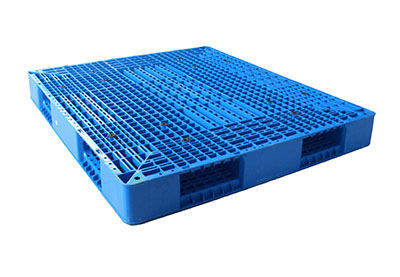The selection of plastic pallets is a key link in enterprise warehousing and logistics management. Reasonable pallet selection directly affects transportation efficiency, cargo safety, and operating costs. So, how should companies scientifically select plastic pallets? The following points can serve as a guide.
Firstly, clarifying the usage requirements is crucial. Enterprises need to consider the main use of pallets: for static storage, dynamic handling, or long-term reuse? If storing heavy objects or stacking them, priority should be given to selecting pallets with strong load-bearing capacity and compression resistance; If frequently used for forklift handling, the bottom structure and anti slip design of the pallet are particularly important. In addition, the size of the pallet must match the specifications of the storage shelves and transportation vehicles to avoid space waste or inconvenient operation.

Material selection is equally important. Common plastic trays are mostly made of polyethylene (PE) or polypropylene (PP). PE pallets have good flexibility, low temperature resistance, and are suitable for cold storage environments; PP pallets have high hardness and high temperature resistance, making them suitable for high-temperature work environments. Enterprises should choose materials that meet hygiene standards or have anti-corrosion properties based on their own industry characteristics, such as in the food, pharmaceutical, or chemical fields. If the tray needs to be exposed outdoors, its resistance to UV aging should also be considered.
The structural design cannot be ignored either. The nine legged pallet is convenient for forklifts to enter and exit from all sides, suitable for situations with frequent circulation; The Chuan or Tian shaped base enhances stability and is suitable for heavy cargo. Some companies can also choose reinforced trays with built-in steel pipes to significantly improve load capacity. In addition, detailed designs such as edge reinforcement and anti slip pads can effectively reduce the risk of cargo slipping.
When making a purchase, companies should also evaluate the service life and cost-effectiveness of the pallet. Although trays made of brand new materials are expensive, they have strong durability and are more economical for long-term use; And the cost of return trays is low, suitable for short-term or light load scenarios. At the same time, environmental factors are increasingly being emphasized, and recyclable and easy to handle pallets help companies achieve green operations.
Finally, it is recommended that companies purchase from legitimate manufacturers and obtain relevant certifications, such as ISO quality management system or food grade safety certificate. Field testing samples and referencing user evaluations can also help make more informed decisions.
In summary, when selecting plastic pallets, it is necessary to comprehensively consider their usage, material, structure, and cost, and combine them with the actual needs of the enterprise in order to choose the ideal product that is efficient, safe, and economical. Scientific choices not only improve logistics efficiency, but also lay the foundation for sustainable development of enterprises.
